The 6-Kingdoms of life -> mosses
Mosses: An Introduction to Bryophytes
Mosses are small, non-vascular plants belonging to the group of bryophytes. They are found in moist environments and are often seen growing on the surface of soil, rocks, and tree trunks. Mosses play a crucial role in the ecosystem as they contribute to soil formation and provide habitat for small organisms.
Characteristics of Mosses
- Non-Vascular: Mosses lack vascular tissues, such as xylem and phloem, which are responsible for transporting water and nutrients in higher plants.
- Reproduction: They reproduce via spores and have a life cycle that involves alternation of generations between gametophyte and sporophyte stages.
- Habitat: Mosses thrive in damp and shaded environments, often forming dense mats or cushions in these habitats.
- Adaptations: They have adaptations for water retention and are able to survive desiccation and rehydrate when water is available.
Life Cycle of Mosses
The life cycle of mosses involves two distinct stages: the gametophyte and sporophyte stages.
- Gametophyte Stage: The dominant and photosynthetic stage of the moss life cycle, where male and female gametes are produced.
- Sporophyte Stage: The stage where the sporophyte, which is dependent on the gametophyte, produces spores through meiosis for dispersal.
Ecological Importance
Mosses play several important ecological roles, including:
- Contributing to soil formation by trapping and retaining moisture and organic matter.
- Providing habitat and food for small invertebrates and microorganisms.
- Acting as indicators of environmental health, as they are sensitive to pollution and habitat disturbances.
Study Guide: Mosses
To study mosses effectively, consider the following aspects:
- Identify and observe different species of mosses in their natural habitats.
- Study the life cycle of mosses, including the alternation of generations and the reproductive structures.
- Investigate the ecological importance of mosses and their interactions with other organisms in the ecosystem.
- Explore the adaptations of mosses for survival in specific environmental conditions.
By understanding the characteristics, life cycle, and ecological importance of mosses, you can gain a deeper appreciation for these fascinating and ecologically significant plants.
.◂Science Worksheets and Study Guides Fifth Grade. The 6-Kingdoms of life
Study Guide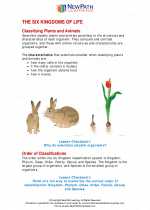 The 6-Kingdoms of life
The 6-Kingdoms of life  Activity Lesson
Activity Lesson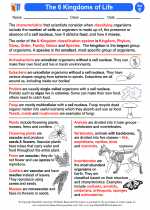 Kingdoms
Kingdoms  Worksheet/Answer key
Worksheet/Answer key The 6-Kingdoms of life
The 6-Kingdoms of life  Worksheet/Answer key
Worksheet/Answer key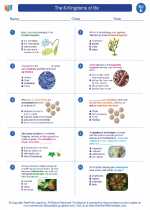 The 6-Kingdoms of life
The 6-Kingdoms of life  Worksheet/Answer key
Worksheet/Answer key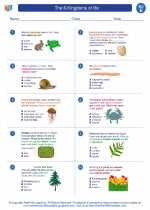 The 6-Kingdoms of life
The 6-Kingdoms of life  Worksheet/Answer key
Worksheet/Answer key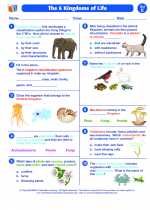 The 6-Kingdoms of life
The 6-Kingdoms of life  Vocabulary/Answer key
Vocabulary/Answer key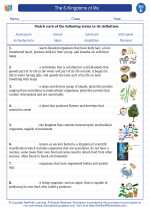 The 6-Kingdoms of life
The 6-Kingdoms of life  Vocabulary/Answer key
Vocabulary/Answer key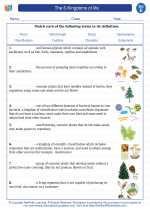 The 6-Kingdoms of life
The 6-Kingdoms of life  Vocabulary/Answer key
Vocabulary/Answer key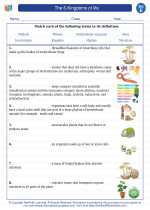 The 6-Kingdoms of life
The 6-Kingdoms of life  Vocabulary/Answer key
Vocabulary/Answer key The 6-Kingdoms of life
The 6-Kingdoms of life 

 Activity Lesson
Activity Lesson
 Worksheet/Answer key
Worksheet/Answer key
 Worksheet/Answer key
Worksheet/Answer key
 Worksheet/Answer key
Worksheet/Answer key
 Worksheet/Answer key
Worksheet/Answer key
 Vocabulary/Answer key
Vocabulary/Answer key
 Vocabulary/Answer key
Vocabulary/Answer key
 Vocabulary/Answer key
Vocabulary/Answer key
 Vocabulary/Answer key
Vocabulary/Answer key

The resources above cover the following skills:
Concepts of Life Science (SC1, SC2, SC3)
The student demonstrates an understanding of the structure, function, behavior, development, life cycles, and diversity of living organisms by identifying and sorting animals into groups using basic external and internal features.